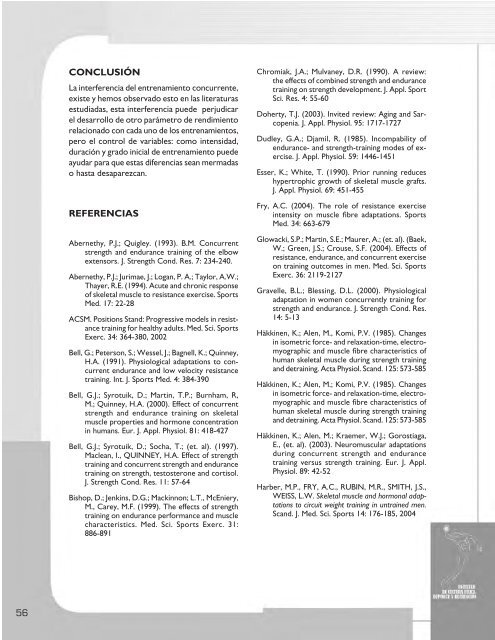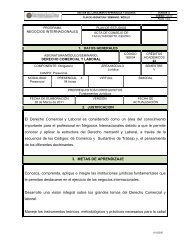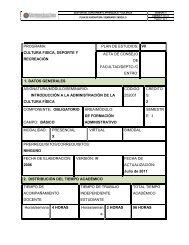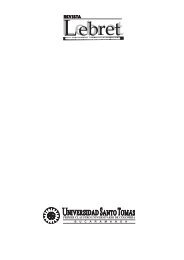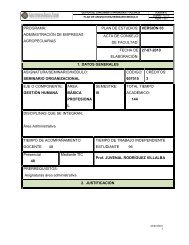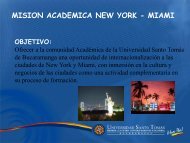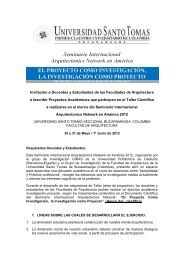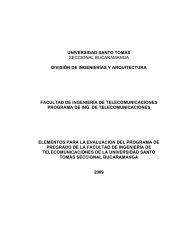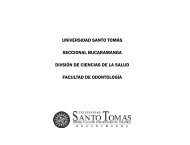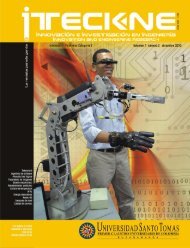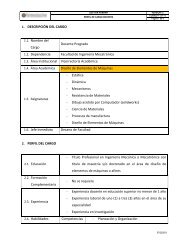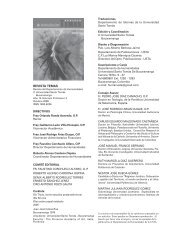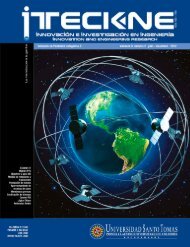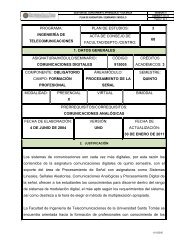CONCLUSIÓNLa interferencia del entrenamiento concurrente,existe y hemos observado esto en las literaturasestudiadas, esta interferencia puede perjudicarel desarrollo de otro parámetro de rendimientorelacionado con cada uno de los entrenamientos,pero el control de variables: como intensidad,duración y grado inicial de entrenamiento puedeayudar para que estas diferencias sean mermadaso hasta desaparezcan.REFERENCIASAbernethy, P.J.; Quigley. (1993). B.M. Concurrentstrength and endurance training of the elbowextensors. J. Strength Cond. Res. 7: 234-240.Abernethy, P.J.; Jurimae, J.; Logan, P. A.; Taylor, A.W.;Thayer, R.E. (1994). Acute and chronic responseof skeletal muscle to resistance exercise. SportsMed. 17: 22-28ACSM. Positions Stand: Progressive models in resistancetraining for healthy adults. Med. Sci. SportsExerc. 34: 364-380, 2002Bell, G.; Peterson, S.; Wessel, J.; Bagnell, K.; Quinney,H.A. (1991). Physiological adaptations to concurrentendurance and low velocity resistancetraining. Int. J. Sports Med. 4: 384-390Bell, G.J.; Syrotuik, D.; Martin, T.P.; Burnham, R,M.; Quinney, H.A. (2000). Effect of concurrentstrength and endurance training on skeletalmuscle properties and hormone concentrationin humans. Eur. J. Appl. Physiol. 81: 418-427Bell, G.J.; Syrotuik, D.; Socha, T.; (et. al). (1997).Maclean, I., QUINNEY, H.A. Effect of strengthtraining and concurrent strength and endurancetraining on strength, testosterone and cortisol.J. Strength Cond. Res. 11: 57-64Bishop, D.; Jenkins, D.G.; Mackinnon; L.T., McEniery,M., Carey, M.F. (1999). The effects of strengthtraining on endurance performance and musclecharacteristics. Med. Sci. Sports Exerc. 31:886-891Chromiak, J.A.; Mulvaney, D.R. (1990). A review:the effects of combined strength and endurancetraining on strength development. J. Appl. SportSci. Res. 4: 55-60Doherty, T.J. (2003). Invited review: Aging and Sarcopenia.J. Appl. Physiol. 95: 1717-1727Dudley, G.A.; Djamil, R. (1985). Incompability ofendurance- and strength-training modes of exercise.J. Appl. Physiol. 59: 1446-1451Esser, K.; White, T. (1990). Prior running reduceshypertrophic growth of skeletal muscle grafts.J. Appl. Physiol. 69: 451-455Fry, A.C. (2004). The role of resistance exerciseintensity on muscle fibre adaptations. SportsMed. 34: 663-679Glowacki, S.P.; Martin, S.E.; Maurer, A.; (et. al). (Baek,W.; Green, J.S.; Crouse, S.F. (2004). Effects ofresistance, endurance, and concurrent exerciseon training outcomes in men. Med. Sci. SportsExerc. 36: 2119-2127Gravelle, B.L.; Blessing, D.L. (2000). Physiologicaladaptation in women concurrently training forstrength and endurance. J. Strength Cond. Res.14: 5-13Häkkinen, K.; Alen, M., Komi, P.V. (1985). Changesin isometric force- and relaxation-time, electromyographicand muscle fibre characteristics ofhuman skeletal muscle during strength trainingand detraining. Acta Physiol. Scand. 125: 573-585Häkkinen, K.; Alen, M.; Komi, P.V. (1985). Changesin isometric force- and relaxation-time, electromyographicand muscle fibre characteristics ofhuman skeletal muscle during strength trainingand detraining. Acta Physiol. Scand. 125: 573-585Häkkinen, K.; Alen, M.; Kraemer, W.J.; Gorostiaga,E., (et. al). (2003). Neuromuscular adaptationsduring concurrent strength and endurancetraining versus strength training. Eur. J. Appl.Physiol. 89: 42-52Harber, M.P., FRY, A.C., RUBIN, M.R., SMITH, J.S.,WEISS, L.W. Skeletal muscle and hormonal adaptationsto circuit weight training in untrained men.Scand. J. Med. Sci. Sports 14: 176-185, 200456
Hass, C.J., Garzarella, L., de Hoyos, D.V., Connaughton,D.P., Pollock, M.L. Concurrent improvementsin cardiorrespiratory and muscle fitness in responseto total body recumbent stepping in humans. Eur.J. Appl. Physiol. 85: 157-163, 2001Helgerud, J., Christian, L.E., Wisloff, U., Hoff, J. Aerobicendurance training improves soccer performance.Med. Sci. Sports Exerc. 33: 1925-1931, 2001Hennessy, L.C., Watson, A.W.S. The interference effectsof training for strength and endurance simultaneously.J. Strength Cond. Res. 8: 12-19, 1994Hickson, R.C. Interference of strength development bysimultaneously training for strength and endurance.Eur. J. Appl. Physiol. 215: 255-263, 1980Hickson, R.C., Dvopak, B.A., Gorostiaga, E.M.,Kurowski, T.T., Foster, C. Potential for strengthand endurance training to amplify endurance performance.J. Appl. Physiol. 65: 2285-2290, 1988Hoff, J., Helgerud, J. Endurance and strength training forsoccer players. Physiological considerations. SportsMed. 34: 165-180, 2004Holloszy, J.O., Coyle, E.F. Adaptations of skeletalmuscle to endurance exercise and their metabolicconsequences. J. Appl. Physiol. 56: 831-838, 1984Hunter, G., Demment, R., Miller, D. Developmentof strength and maximal oxygen uptake duringsimultaneous training for strength and endurance.J. Sports Med. Phys. Fitness 27: 269-275, 1987Izquierdo, M., Häkkinen, K., Ibañez, J., Kraemer, W.J.,Gorostiaga, E.M. Effect of combined resistanceand cardiovascular training on strength power,muscle cross-sectional area, and endurance markersin middle-aged men. Eur. J. Appl. Physiol. 94:70-75, 2005Kasch, F.W., Boyer, J.L., Schmidt, P.K., Wells, R.H.,Wallace, J.P., Verity, L.S., Guy, H., Schneider, D.Ageing of the cardiovascular system during 33 yearsof aerobic exercise. Age Ageing. 28: 531-536, 1999Kraemer, W.J., Patton, J.F., Gordon, S.E., Harman,E.A.,Deschenes, M.R., Reynolds, K., Newton, R.U.,Triplett, N.T., Dziados, J.E. Compatibility ofhigh-intensity strength and endurance training onhormonal and skeletal muscle adaptations. J. Appl.Physiol. 78: 976-989, 1995Leveritt, M., Abernethy, P.J., Barry, B., Logan, P. Concurrentstrength and endurance training: the influenceof dependent variable selection. J. Strength Cond.Res. 17: 503-508, 2003Leveritt, M., Abernethy, P.J., Barry, B., Logan, P. Concurrentstrength and endurance training. A review.Sports Med. 28: 413-427, 1999McCafferty, W.B., Horvath, S.M. Specificity of exerciseand specificity of training: a subcellular review. Res.Quat. 48: 358-371, 1977McCarthy, J.P., Poznyak, M.A., Agre, J.C. Neuromuscularadaptations to concurrent strength andendurance training. Med. Sci. Sports Exerc. 34:511-519, 2002McCartney, N., McKELVIE, R.S., HASLAN, D.R., JO-NES, N.L. Usefulness of weight training in improvingstrength and maximun power output in coronaryartery disease. Am. J. Cardiol. 67: 939-945, 1991Nelson, A.G., Arnall, D.A., LOY, S.F., Sivester, L.J.,Conlle, R.K. Consequences of combining strengthand endurance training regimens. Phys. Ther. 70:287-294, 1990Sale, D., Macdougall, D., Jacobs, I., Garner, S. Interactionbetween concurrent strength and endurancetraining. J. Appl. Physiol. 68: 260-356, 1990Tanaka, H., Swensen, T. Impact of resistance trainingon endurance performance. A new form of crosstraining.Sports Med. 25: 191-200, 1998Tesch, P. Skeletal muscle adaptations consequent to longtermheavy resistance exercise. Med. Sci. SportsExerc. 20: S132-S134, 1988Trappe, S., Costill, D., Thomas, R. Effect of swim taperon whole muscle and single muscle fiber contractileproperties. Med. Sci. Sports Exerc. 32: 48-56,200157
- Page 3:
B U C A R A M A N G ADIRECTIVOSRect
- Page 7 and 8: Efecto del entrenamiento anaeróbic
- Page 9 and 10: proveer un estímulo eficiente para
- Page 11 and 12: RESULTADOSCaracterísticas morfoló
- Page 13 and 14: Figura 2. Concentración plasmátic
- Page 15 and 16: Antes del periodo de entrenamiento
- Page 17: Parker, D. F., J. M. Round, et al.
- Page 20 and 21: INTERFERENCIA DE UN PROGRAMADE ENTR
- Page 22 and 23: METODOLOGÍAMuestraParticiparon del
- Page 24 and 25: Tabla 5. Potencia Anaeróbica Pico
- Page 26 and 27: entrenamiento de fuerza, además de
- Page 29 and 30: ESTRUTURA TEMPORAL EMÉTODOS DE ENS
- Page 31 and 32: Em relação ao ensino das habilida
- Page 33 and 34: unidades funcionais, que propiciam
- Page 35: Marques, A. (1999). Crianças e ado
- Page 38 and 39: ÍNDICE DE ESTIMULACIÓNERITROCITAR
- Page 40 and 41: para recolección de suero. Una vez
- Page 42 and 43: cuales el deportista (hombre) es co
- Page 45 and 46: PROPUESTA METODOLÓGICADEL ENTRENAM
- Page 47 and 48: estímulo del organismo y no se pro
- Page 49 and 50: Habilidad perceptiva. Visión perif
- Page 51: Castillo, J. M. (1999). Efectos de
- Page 54 and 55: ADAPTACIONES DELENTRENAMIENTO CONCU
- Page 56 and 57: ocurre una hipertrofia en las fibra
- Page 61 and 62: ANÁLISIS COMPORTAMENTAL DELFÍSICO
- Page 63 and 64: usuarios de un Gimnasio, con edades
- Page 65 and 66: Mediante este software se valoró i
- Page 67 and 68: es aproximadamente equivalente a la
- Page 69: thickness: measurements of 481 men
- Page 72 and 73: O TEACHING GAMES FORUNDERSTANDING (
- Page 74 and 75: Figura 1: Modelo de ensino do jogo
- Page 76 and 77: sem o cimento afetivo, os blocos ps
- Page 78 and 79: French, K., Rink, J., Rikard, L., M
- Page 81 and 82: COMPARACIÓN DE DOS MÉTODOSPARA EL
- Page 83 and 84: Este método mide la impedancia u o
- Page 85 and 86: también normal. El tercer grupo co
- Page 87 and 88: Tabla 5. Resultados estadísticos d
- Page 89 and 90: se distribuye en colores blanco y n
- Page 91: Frisancho, A. (1984). New standars
- Page 94 and 95: METODOLOGÍA PARA EL PROCESODE CORR
- Page 96 and 97: CUESTIONARIOFue aplicado a los entr
- Page 98 and 99: En cuanto a los 22 entrenadores de
- Page 100 and 101: Masculino47,1%Figura 6. Distribuci
- Page 102 and 103: ellas; para obtener resultados sati
- Page 104 and 105: 1. La metodología que presentamos
- Page 106 and 107: Vázquez, A.; Martínez, I. (1990).
- Page 108:
EDITORIALUn espacio para la Cultura


